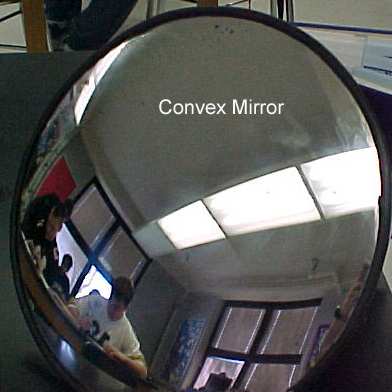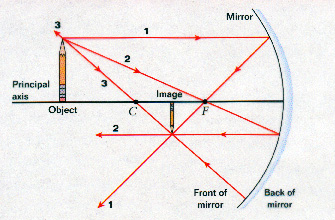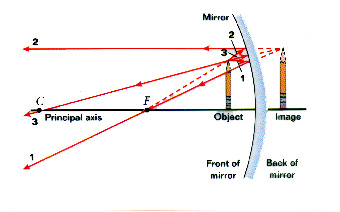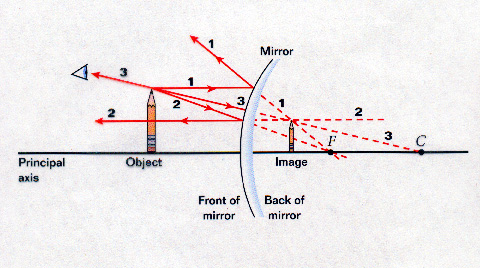Ray Tracing for Mirrors
 |
 |
Ray diagrams provide a geometric explanation for the formation of images in both plane and spherical mirrors. Three basic rays are necessary to locate and describe the image of an object. In the figure below, two examples of ray diagrams for a concave mirror are shown and explained with a description of each of the 3 rays provided below.
 |
 |
Concave Mirrors
Ray 1:
Light that comes in parallel to the principle axis will reflect back through F.
Ray 2:
Light that comes in from F will reflect out parallel to the principal axis.
Ray 3:
Light that comes into the mirror from C will reflect back through C.
**It is important to note that all of the light in a ray diagram originates at the same point on the object.
The figure below provides an example of ray diagram for a convex mirror. Unlike concave mirrors where the location of the object will effect the image produced, the convex mirror only produces one basic image.
Convex Mirrors
Ray 1:
Light that comes into the mirror parallel to the principal axis will reflect away from F.
Ray 2:
Light that comes into the mirror toward F reflects back parallel.
Ray 3:
Light that come into the mirror toward C reflects back away from C.
Ray diagrams provide information on the following for image characteristics:
Location
Orientation - erect or inverted
Magnification - magnified or reduced
Image Type - real or virtual
Return to the Main Page
